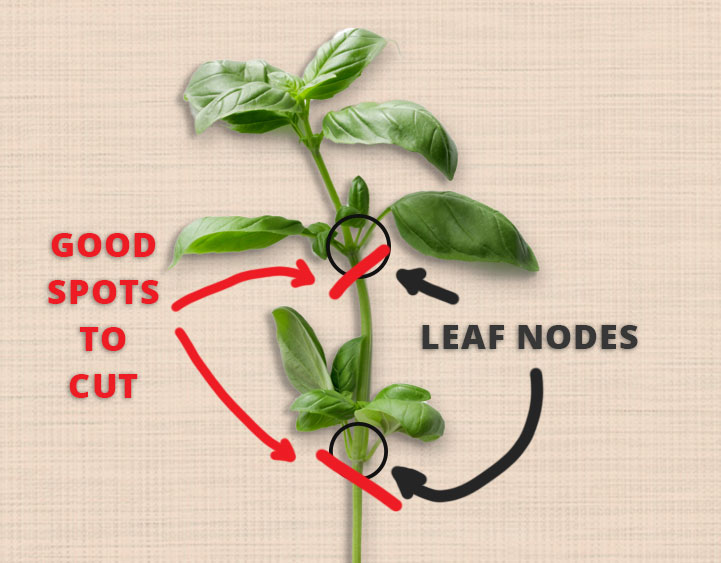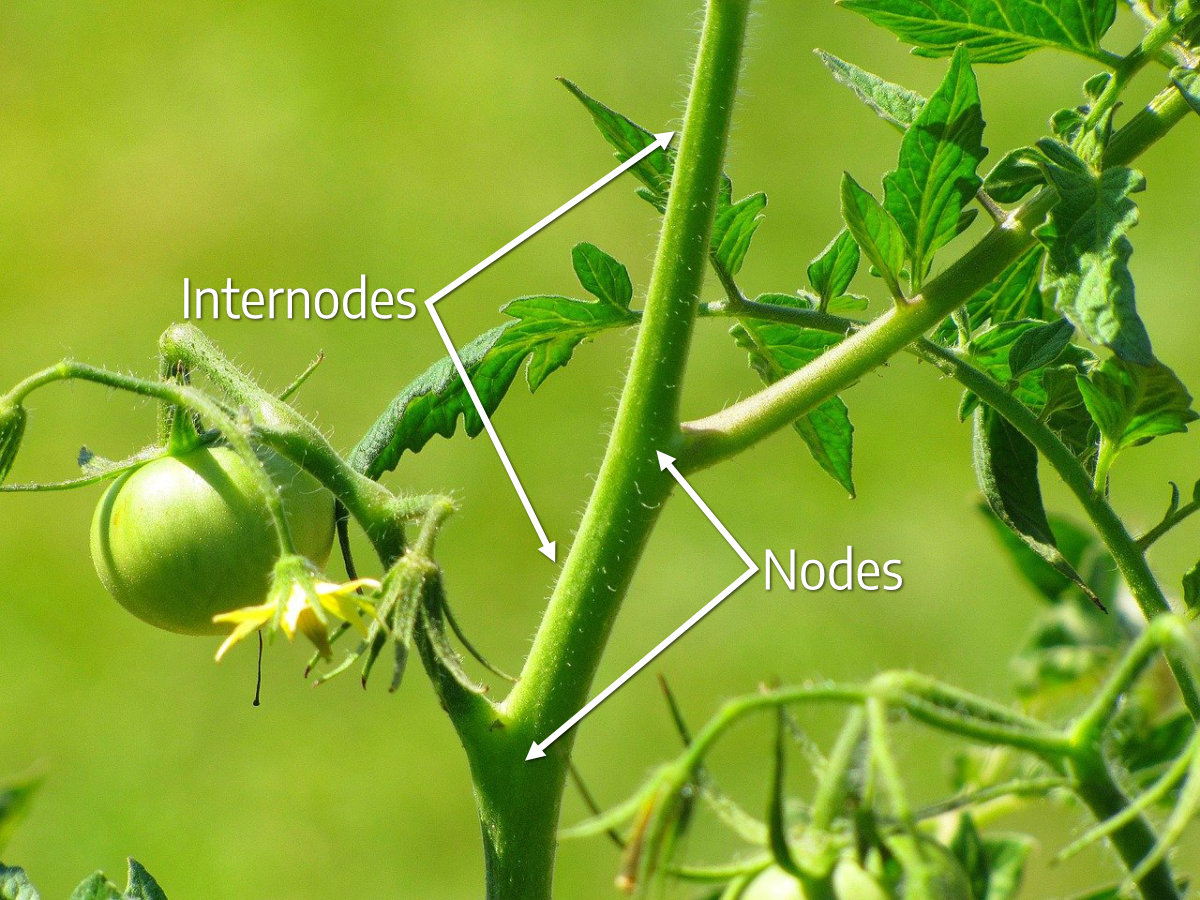What is a Node on a Plant?
In the world of botany, a node is a crucial component of a plant’s anatomy. It is the point on a stem where a leaf is attached, and it plays a vital role in plant growth and development. But where is the node on a plant? Understanding node location is essential for gardening and botany enthusiasts, as it affects plant care and propagation. A node is the area from which new stems, roots, and leaves emerge, making it a critical junction for plant growth. By grasping the concept of nodes, individuals can improve their plant cultivation skills, leading to healthier, more thriving plants.
How to Locate the Node on Your Plant
Identifying the node on a plant can be a straightforward process if you know what to look for. To locate the node, start by examining the stem of your plant. Where is the node on a plant? Typically, it’s the point where a leaf meets the stem, creating a slight swelling or joint. This area is often marked by a slight change in color or texture, making it easier to spot. Another distinguishing feature is the presence of a small bud or axil, which is the area where new growth emerges. By carefully inspecting the stem and looking for these visual cues, you can accurately identify the node on your plant.
The Role of Nodes in Plant Development
Nodes play a crucial role in plant growth and development, serving as the foundation for new stems, roots, and leaves. These critical points on the stem are responsible for producing new growth, influencing plant shape and structure, and facilitating the transport of water, nutrients, and sugars throughout the plant. Understanding where is the node on a plant is essential to grasping the significance of nodes in plant development. By recognizing the node’s role in producing new growth, gardeners and botanists can better appreciate the importance of proper pruning, training, and propagation techniques to promote healthy plant development. Furthermore, nodes affect the overall shape and structure of a plant, influencing its ability to absorb light, water, and nutrients. By recognizing the node’s impact on plant development, individuals can make informed decisions about plant care and cultivation, leading to more thriving and resilient plants.
Node Location and Plant Propagation
Accurate node location is crucial for successful plant propagation. When taking cuttings, identifying the node is essential to ensure the cutting develops into a healthy, thriving plant. The node serves as a point of attachment for new roots, stems, and leaves, making it the ideal location for cutting and grafting. By understanding where is the node on a plant, gardeners can increase their chances of successful propagation. For example, when taking stem cuttings, it’s essential to cut just above a node, as this is where new roots will develop. Similarly, in grafting and layering techniques, the node plays a critical role in facilitating the union of two plant parts. By recognizing the importance of node location in plant propagation, gardeners can refine their techniques and improve their success rates.
Common Node-Related Mistakes to Avoid
When working with nodes, gardeners often make mistakes that can hinder plant growth and development. One common error is incorrect pruning or cutting techniques, which can damage the node and prevent new growth. For instance, cutting too close to the node can remove the auxin-rich tissue, reducing the plant’s ability to produce new stems and roots. Another mistake is failing to identify the node correctly, leading to ineffective propagation techniques. By understanding where is the node on a plant, gardeners can avoid these mistakes and ensure successful plant care. Additionally, gardeners should avoid over-handling the node, as this can cause physical damage and reduce the plant’s ability to respond to environmental stimuli. By being aware of these common mistakes, gardeners can refine their techniques and improve their chances of success.
Node Anatomy: A Closer Look
A node is a complex structure that plays a crucial role in plant growth and development. At its core, a node consists of a swollen area of stem tissue where a leaf meets the stem. This area is rich in auxins, hormones that promote cell growth and differentiation. The node is also where the axil, a small cavity that forms at the base of the leaf petiole, is located. The axil is a critical region where new shoots and roots can emerge, making it an essential component of node anatomy. Understanding the structure of the node and the role of the axil is essential for gardeners and botanists, as it can inform propagation techniques and improve plant care. For example, knowing where is the node on a plant can help gardeners identify the best location for taking cuttings or grafting. By delving deeper into the anatomy of a node, gardeners can gain a better appreciation for the intricate mechanisms that govern plant growth and development.
Node Location in Different Plant Types
While the concept of nodes remains consistent across plant species, the location and characteristics of nodes can vary significantly. In trees, nodes are often more prominent and can be identified by the scars left by fallen leaves. In shrubs, nodes may be smaller and more compact, but still play a crucial role in shaping the plant’s structure. Herbaceous plants, such as tomatoes and peppers, have nodes that are often more subtle, but still essential for producing new stems and roots. Understanding where is the node on a plant is particularly important in these species, as it can inform pruning and training techniques. For example, in roses, nodes are located at the base of each leaf, and cutting just above a node can encourage new growth. In popular garden plants like hydrangeas and lilacs, nodes are often located at the base of the stem, and can be used to propagate new plants. By recognizing the unique characteristics of nodes in different plant types, gardeners can refine their techniques and improve their chances of success.
Conclusion: Mastering Node Identification for Better Plant Care
Understanding where is the node on a plant is a crucial aspect of plant anatomy that can greatly impact gardening and botany enthusiasts’ ability to care for their plants. By grasping the concept of nodes and their role in plant growth, gardeners can refine their techniques and improve their chances of success. Whether it’s identifying the node to take cuttings, understanding how nodes affect plant shape and structure, or recognizing the unique characteristics of nodes in different plant types, mastering node identification is essential for optimal plant care. By applying the knowledge gained from this guide, gardeners can unlock the full potential of their plants, promote healthy growth, and enjoy a more rewarding gardening experience. With a deeper understanding of node anatomy and location, gardeners can take their skills to the next level and cultivate thriving, beautiful plants that bring joy and beauty to their surroundings.







